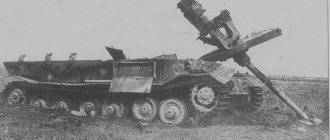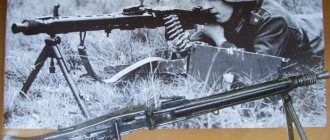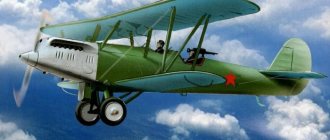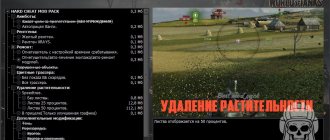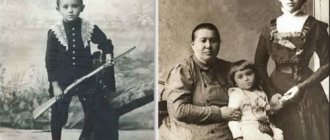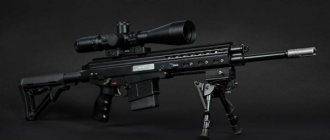The heroes of the popular book and film “The meeting place cannot be changed”, workers of the legendary MUR use a bus nicknamed “Ferdinand” as transport. From the driver's lips, the main character learns that the car was named for its similarity in silhouette to a German self-propelled gun.
From this short episode you can find out how well-known the self-propelled artillery mount produced by Ferdinand Porsche was among front-line soldiers. Despite the small number of vehicles produced, these installations are etched in the memory of everyone who has seen them in battle.
History of creation
The Ferdinand self-propelled breakthrough vehicle owes its birth to another, no less epic example of the German tank genius. The beginning of 1941 was marked by Hitler's personal order to the two largest design bureaus in Germany on May 26 at a meeting in the presence of the highest ranks of the engineering department related to the armored forces.
In the presence of representatives of the design bureau, the battles in France were analyzed and the shortcomings of German combat vehicles were identified. Special orders were officially placed with Ferdinand Porsche and Steyer Hacker, director of Henschel. They were supposed to create a heavy tank designed to break through the defense lines of Germany's opponents.
Another reason for the order was the ineffectiveness of most German tanks in the fight against the thick-skinned English Matildas Mk.II. If the planned Operation Sea Lion was successful, the Panzerwaffe would have to face, according to various estimates, 5 thousand of these vehicles. At the same meeting, the Fuhrer was presented with models of Porsche and Henschel tanks.
The summer of 1941 had a dual impact on the development of new tanks.
On the one hand, the designers were busy refining the machines in the series. On the other hand, the Wehrmacht became acquainted with KV tanks, which made a huge impression on both generals and ordinary tankers. In the fall of 1941, work on the development of a heavy tank continued at an accelerated pace.
The Armament Directorate, which oversaw the creation of the vehicle, was on the side of the Henschel company. At their request, the development was headed by Erwin Aders, who went down in history as the chief designer of the symbol tank of the Wehrmacht.
During this period, Ferdinand Porsche entered into a serious conflict with the Armament Directorate due to technical inconsistencies in the turret of the tank being designed and ordered by officials. Subsequently, this will play a role in the fate of both prototypes.
Dr. Todt, Porsche's only ally in promoting his model, dies in a plane crash. However, Ferdinand himself was confident in the success of his development. Enjoying unlimited success with Hitler, he placed, at his own risk, an order with the Nibelungenwerk company for the manufacture of cases for his machines.
The enmity between the Fuhrer's favorite and the Department officials played a role in the tests.
Despite the non-superiority of the Porsche model, recorded during the tests, it was recommended to adopt the Henschel model, to the horror of the German army technicians. Hitler's proposal to produce two vehicles was met with a restrained refusal, motivated by the impossibility of producing two expensive but equivalent tanks in wartime.
Failure turned to Porsche after it became clear in March 1942 that the new powerful assault weapons required by Hitler, equipped with an 88-mm gun, could not be created on the basis of the PzKpfw. IV, as originally planned.
This is where the 92 chassis units built by Nibelungenwerk came in handy for Porsche designs that never made it into the Tiger series. The creator himself plunged headlong into the new project. Carried away by the calculations, he worked out a diagram with the location of the crew in the spacious conning tower located at the rear.
After approvals from the Armament Directorate and modifications, the Nibelungenwerk plant began assembling the bodies of new self-propelled guns based on the long-suffering chassis. During this period, it is unclear by whom, the machine gun planted by Porsche was removed. This “revision” will later play a role in the fate of the self-propelled guns.
The beginning of 1943 was marked by the release of the first self-propelled guns and their dispatch to the front. In February, a gift from the Fuhrer to the creator of the self-propelled gun arrives - the vehicle is officially given the name “Vater”, “Ferdinand”. By order of the same “possessed” self-propelled guns go to the East without acceptance. Quite surprised, Porsche recalled that he was waiting for complaints from the front about his unfinished cars in a hurry, but did not receive any.
Start of mass production
Initially, it was planned to produce 15 vehicles in February 1943, another 35 in March and 40 in April, that is, a strategy was being pursued to increase production. Initially, all tanks were to be produced by Alkett, but then this job was entrusted to Nibelungenwerke. This decision was due to a number of reasons. Firstly, more railway platforms were needed to transport self-propelled gun hulls, and all of them at that time were busy delivering the Tiger tank to the front. Secondly, the VK 4501 (P) hulls were redesigned more slowly than required. Thirdly, Alkett would have to re-adjust the production process, since at that moment the plant was assembling StuG III anti-tank vehicles. But Alkett still took part in the assembly of the vehicle, sending a group of mechanics who had experience in welding turrets for heavy tanks to Essen, where the supplier of the cabins, the Krupp plant, was located.
Assembly of the first vehicle began on February 16, 1943, and by May 8 all planned tanks were ready. On April 12, one vehicle was sent for testing in Kummersdorf. Subsequently, a review of equipment took place in Rügenwald, where the first Ferdinand was shown. The review of the tank was successful, and Hitler liked the car.
As the final stage of production, a Heeres Waffenamt commission was carried out, and all equipment passed it successfully. All German tanks of the Second World War, including the Ferdinand, were required to undergo it.
Combat use
The baptism of the “Ferdinands” was the Battle of Kursk. Soviet intelligence, however, already on April 11 had information about new equipment being transported to the front line. Attached to the information was an approximate drawing of the machine, quite similar to the original. A requirement was drawn up to design an 85-100 mm gun to combat the armor of self-propelled guns, but before the Wehrmacht’s summer offensive, of course, the troops did not receive these guns.
The Germans saved the secret weapon until July 5, the start date of Operation Citadel.
Already on July 8, the Main Armored Directorate of the USSR received a radiogram about the Ferdinand stuck in a minefield, which immediately attracted attention with its unique silhouette. The officers who arrived for inspection did not have a chance to see this car, since the Germans advanced forward in two days.
The Ferdinands went into battle at Ponyri station. The Germans were unable to take the position of the Soviet troops head-on, so on July 9 a powerful assault group was formed, with the Ferdinands at its head. Having fired shell after shell at the self-propelled guns in vain, the Soviet artillerymen eventually abandoned their positions near the village of Goreloye.
With this maneuver, they lured the advancing group into minefields, and then destroyed a large number of armored vehicles with attacks from the flanks. On July 11, the bulk of the advancing equipment was transferred to another section of the front, the remaining units of the Ferdinand battalion tried to organize the evacuation of the damaged equipment.
This was fraught with many difficulties. The main one was the lack of sufficiently powerful tractors capable of dragging self-propelled guns to their own.
A powerful counterattack by Soviet infantry on July 14 finally upset plans for the removal of this equipment.
Another section of the front, near the village of Teploye, attacked by the Ferdinand battalion, was subjected to no less pressure. Due to more deliberate actions of the enemy, the losses of self-propelled guns here were much lower. But here the first case of a combat vehicle and its crew being captured occurred. During the attack, having been subjected to massive heavy artillery fire, the self-propelled guns began to maneuver.
As a result, the car landed on the sand and “buried” in the ground. At first, the crew tried to dig out the self-propelled guns on their own, but the Soviet infantry that arrived in time quickly convinced the German self-propelled guns. A fully operational vehicle was pulled out of the trap only in early August with the help of two Stalinets tractors.
After the end of the fighting, a comprehensive analysis of the Germans’ use of the new self-propelled gun, as well as ways to effectively combat it, was carried out. The lion's share of the vehicles were disabled due to mine explosions and damage to the chassis. Several self-propelled guns were knocked out by heavy hull artillery and SU-152 fire. One vehicle was destroyed by a bomb from a Pe-2 dive bomber, one was burned by infantrymen with bottles of KS.
And only one vehicle received a hole from a 76-mm shell, in the T-34-76 defense zone from 76-mm divisional guns, fire was fired at a distance of only 200-400 meters. Soviet soldiers were greatly impressed by the new German vehicles. The command, assessing the difficulty of fighting the Ferdinand, gave orders to award orders to those who were able to destroy this vehicle in battle.
Legends about the huge number of these self-propelled guns spread among tankers and artillerymen, since they mistook any German self-propelled gun with a muzzle brake and a rear warhead for a Ferdinand.
The Germans made their own disappointing conclusions. 39 of the 90 available vehicles were lost near Kursk, and 4 more vehicles were burned during the retreat to Ukraine in 1943. The remaining self-propelled guns, in full force, except for a few samples, were taken to Porsche for modification. Some parts were replaced, a frontal machine gun was installed, and the vehicle went to help in the fight against the Allies in Italy.
A widespread myth is that this movement was caused by the heaviness of the system and the greater suitability of the Italian rocky roads for them. In fact, about 30 vehicles were sent to the Eastern Front, where, in the course of repelling the “10 Stalinist strikes” of 1944, the Ferdinands, one by one, were sent into oblivion.
The last battle involving this vehicle was the Battle of Berlin. No matter how beautiful the gun and armor were, it could not hold back the Red Army in the spring of 1945.
The “Ferdinand” self-propelled guns that were received as trophies by the Soviet Union were used as targets for testing new anti-tank weapons, dismantled down to the screw for study, and then were scrapped. The only Soviet car that has survived to this day is located in the famous Kubinka.
Machine successes and battle results
The report on the Battle of Kursk indicates that two divisions fought against the Soviet army, in which there were a significant number of Ferdinands, who were in the 656th tank regiment. In it they destroyed 502 Soviet tanks, more than 100 guns and 20 anti-tank guns. Based on the report, we can conclude that the Red Army suffered serious losses.
Comparative characteristics with the enemy
Like a strong wild beast, “Ferdinand” did not have many enemies who could engage him in single combat on equal terms. If we take vehicles of a similar class, the closest in efficiency will be the Soviet self-propelled guns SU-152 and ISU-152, nicknamed “St. John’s worts” for their efficiency in shooting at Tigers, Panthers and other Hitler’s zoo.
You can also consider the specialized tank destroyer SU-100, which was tested on captured Porsche self-propelled guns.
- armor, the weakest part of Soviet self-propelled guns in comparison with the Ferdinand, 200 mm of frontal armor versus 60...75 for Soviet models;
- gun, 88 mm from the Germans against the 152 mm ML-20 and 100 mm gun, all three guns effectively coped with suppressing the resistance of almost any vehicles, but the Porsche self-propelled guns did not succumb, their (self-propelled guns) armor was penetrated even by 152 mm shells with with great difficulty;
- ammunition, 55 shells for the Porsche self-propelled guns, versus 21 for the ISU-152 and 33 for the SU-100;
- cruising range of 150 km for the Ferdinand and twice as much for domestic self-propelled guns;
- number of models produced: 91 units from the Germans, several hundred SU-152s, 3200 units of ISU, slightly less than 5000 SU-100s.
As a result, the German design is still slightly superior to Soviet models in terms of combat qualities. However, problems with the chassis, as well as meager production, did not allow the full potential of these machines to be used.
In addition, Soviet tankers and self-propelled gunners, having received new powerful 85 and 122 mm guns on T-34 and IS tanks, were able to fight on equal terms with Porsche’s creations, as soon as they approached from the flank or rear. As often happens, everything was ultimately decided by the determination and ingenuity of the crew.
Tactical and technical characteristics of the Elephant self-propelled gun
— Layout diagram: control and transmission compartment in the front, engine in the middle, combat in the rear — Developer: Ferdinand Porsche — Manufacturer: Porsche — Years of development: 1942—1943 — Years of production: 1943 — Years of operation: 1943—1945 — Number of produced, pcs.: 91
Weight of self-propelled gun Elephant
— Combat weight, t: 65.0
Crew: 6 people
Overall dimensions of self-propelled gun Elefant
— Body length, mm: 8140 — Width, mm: 3380 — Height, mm: 2970 — Ground clearance, mm: 485
Reservation of self-propelled guns Elephant
— Armor type: rolled and forged, surface-hardened — Hull forehead (top), mm/deg.: 200(100+100) / 12° — Hull forehead (bottom), mm/deg.: 200 / 35° — Hull side ( top), mm/deg.: 80 / 0° — Hull side (bottom), mm/deg.: 60 / 0° — Hull stern (top), mm/deg.: 80 / 40° — Hull stern (bottom) , mm/deg.: 80 / 0° — Bottom, mm: 20—50 — Hull roof, mm: 30 — Conning tower forehead, mm/deg.: 200 / 25° — Gun mantlet, mm/deg.: 125 — Side cabin, mm/deg.: 80 / 30° — Cabin stern, mm/deg.: 80 / 30° — Cabin roof, mm/deg.: 30 / 85°
Armament of self-propelled gun Elephant
— Caliber and brand of gun: 88-mm Pak 43 — Gun type: Rifled — Barrel length, calibers: 71 — Gun ammunition: 50-55 — VN angles, degrees: −8…+14° — GN angles, degrees: 28° — Sights: periscope Sfl ZF 1a
— Machine guns: 1 × 7.92 MG-34
Engine self-propelled gun Elefant
— Engine type: two V-shaped 12-cylinder carburetors — Engine power, l. pp.: 2×265
Speed self-propelled gun Elefant
— Highway speed, km/h: 35 (tested in the USSR) — Cross-country speed, km/h: 10-15, soft plowing 5-10
— Cruising range on the highway, km: 150 — Cruising range over rough terrain, km: 90
— Specific power, l. s./t: 8.2 — Suspension type: torsion bar — Specific ground pressure, kg/cm²: 1.2
— Overcome ascent, degrees: 22° — Overcome wall, m: 0.78 — Overcome ditch, m: 2.64 — Overcome ford, m: 1.0
Ferdinand device
Hitler spared no materials for his favorite designer, so Porsche cars received the best. The sailors donated part of the reserves of cemented armor designed for huge naval calibers. The mass and thickness made it necessary to connect the armor plates “into a tenon”, additionally using dowels for reinforcement. It was impossible to disassemble this structure.
Further welding of the body was carried out, rather, for sealing, rather than for articulation. The armor plates on the side and stern were placed at a slight angle, increasing projectile resistance. There were also embrasures for firing from the crew's weapons. The small size of these holes, however, did not allow targeted shooting, since the front sight was not visible.
The stern of the wheelhouse had an armored hatch. Shells were loaded into it, and weapons were changed through it. In case of damage, the crew escaped through the same door. There were 6 people inside, the layout included a driver-mechanic and a radio operator in the frontal part, then an engine compartment in the middle, and a gun commander, a gunner and two loaders in the stern.
The movement of the car was carried out by 2 Maybach engines running on gasoline.
In general, the Ferdinand engines were something fantastic by the standards of tank building in the 1940s. The carburetor 12-cylinder HL 120TRM with 265 hp were located not one after the other, but in parallel. The internal combustion engine crankshaft had a flange to which a Typ aGV direct current generator with a voltage of 385 volts from Siemens-Schuckert was attached.
Electricity from the generators was transmitted to 2 Siemens-Schuckert D149aAC traction motors with a power of 230 kW each. The electric motor rotated a reduction planetary gearbox, which, accordingly, rotated its own traction sprocket of the caterpillar.
The low-voltage circuit is made according to a single-wire circuit. Some devices (radio station, lighting, fan) were powered by 12V, some (starters, independent excitation windings of electric machines) by 24V. Four batteries were charged from 24-volt generators located on each engine. All electrical work was done.
The problem was caused by the exhaust system. At the 5th road wheel there was an outlet for the exhaust pipe, everything around it heated up, the lubricant evaporated from the bearings, and the rubber band quickly failed.
Porsche took the chassis of the self-propelled gun from its own Leopard tank, invented in 1940. A special feature of it was the presence of a trolley for torsion bars, 3 per side, rather than installing them inside the hull. This earned Ferdinand the love of German technicians, who turned gray only at the mention of the chassis of Henschel’s Tiger.
It took Dr. Porsche about 4 hours to change the skating rink; the same operation on the Tiger took about a day.
The rollers themselves were also successful due to the tires inside the wheel. This required 4 times less rubber. The principle of shear operation increased the service threshold of the bandage.
The success of the experiment can be recognized by the introduction of rollers of a similar design on heavy tanks at the end of the war. One side required 108-110 tracks with a width of 64 centimeters.
The armament of the self-propelled gun was an 88-mm gun with a barrel length of 71 caliber (about 7 meters). The gun was installed in a ball mask, in the frontal part of the cabin.
This design turned out to be unsuccessful, since a lot of fragments and splashes of lead from bullets fell into the cracks. Later, to correct this defect, special protective shields were installed. The Ferdinand gun, one of the most powerful developments in the German army, was originally an anti-aircraft gun. After fine-tuning it was put on a self-propelled gun.
Its shells effectively hit almost any Soviet or allied armored vehicle from a long distance. The ammunition included armor-piercing and sub-caliber shells, as well as high-explosive fragmentation shells, separately loaded.
The above-mentioned lack of a machine gun on early vehicles can be explained as follows. According to German tactics, assault self-propelled guns should move in the second line of attack, behind tanks and infantry, covering them with gun fire. Near Kursk, the high concentration, and, most importantly, the effectiveness of artillery fire, forced the self-propelled guns to be thrown forward, with minimal cover.
The optics were represented by a monocular sight, providing gun guidance at a range of 2 km.
Internal communication was supported by an intercom; the radio operator (who is also a gunner in the modernized Elefant) was responsible for external communication.
Hull, weapons and equipment
The conning tower was a tetrahedral pyramid, truncated at the top. It was made from cemented naval armor. According to technical requirements, the frontal armor of the wheelhouse reached 200 mm. An 88 mm Pak 43 anti-tank gun was installed in the fighting compartment. Its ammunition capacity was 50-55 rounds. The length of the gun reached 6300 mm, and its weight was 2200 kg. The gun fired various types of armor-piercing, high-explosive and cumulative shells, which successfully penetrated almost any Soviet tank. “Ferdinand”, “Tiger”, later versions of the StuG were equipped with this particular weapon or its modifications. The horizontal sector that the Ferdinand could fire without turning the chassis was 30 degrees, and the elevation and declination angle of the gun was 18 and 8 degrees, respectively.
The hull of the tank destroyer was welded, consisting of two compartments - combat and power. For its manufacture, heterogeneous armor plates were used, the outer surface of which was harder than the inner. The frontal armor of the hull was initially 100 mm, later it was reinforced with additional armor plates. The power compartment of the hull contained an engine and electric generators. An electric motor was located in the rear part of the hull. To comfortably drive the car, the driver’s seat was equipped with everything necessary: engine monitoring devices, a speedometer, a clock and periscopes for inspection. For additional orientation, there was a viewing slot on the left side of the body. To the left of the driver was a radio operator who operated the radio station and fired from a machine gun. SPGs of this type were equipped with radios of the FuG 5 and FuG Spr f models.
The rear part of the hull and the fighting compartment accommodated the rest of the crew - the commander, gunner and two loaders. The roof of the cabin had two hatches - the commander's and the gunner's - which were double-leaf, as well as two small single-leaf hatches for the loaders. Another large round hatch was made at the back of the wheelhouse; it was intended for loading ammunition and entering the fighting compartment. The hatch had a small loophole to protect the self-propelled gun from the rear from the enemy. It should be said that the German Ferdinand tank, a photo of which can now be easily found, is a very recognizable vehicle.
Contribution to culture and history
Porsche's car, despite its small circulation, left a bright mark on the history of the Second World War. Along with the Tiger and Messerschmitt, this self-propelled gun is a symbol of the Wehrmacht. Having made the glory of German self-propelled systems, it was a real horror for the enemy.
Of course, you can learn to fight with any enemy, but in 1943 real “Ferdinandophobia” began among the troops. Cunning Germans took advantage of this by putting buckets on the barrels of other self-propelled guns, simulating a muzzle brake.
Judging by the memoirs, Soviet troops alone destroyed about 600 Ferdinands during the battles, with a total production of 91 units.
The Germans were not far behind. The harder and more unsuccessful the war was for them, the greater the number of destroyed Soviet tanks. Often in their memoirs, tankers and self-propelled gunners cite numbers of damaged vehicles that are twice the number of armored vehicles on the front. In both cases, the self-propelled guns in question played a huge role.
Much attention is paid to self-propelled guns in the literature. The work of fiction “In War as in War,” describing Soviet self-propelled guns, contains a description of the battlefield after a meeting of a German self-propelled gun with a group of “thirty-fours,” which was not beneficial for Soviet equipment. The fighters themselves speak of him as a worthy and dangerous opponent.
“Ferdinand” is also often found in computer games based on World War II.
Actually, it’s easier to name those games that don’t have self-propelled guns. It is worth noting that the characteristics and descriptions in such crafts often do not correspond to reality. For the sake of playability, developers sacrifice the real characteristics of the car.
You can make and put on the shelf a legendary car yourself. Many model companies make building kits in different scales. You can name the brands Cyber Hobby, Dragon, Italeri. Twice it produced and put into production self-propelled guns. The first issue, number 3563, had many inaccuracies.
The patterns copied from Italeri represented the “Elephant”, and had many inaccuracies. The next model, 3653, is the first Ferdinand to be christened near Kursk.
The Second World War and the Great Patriotic War produced many technical samples that have become legends. Among German-made self-propelled guns, the Ferdinand takes first place, of course.
Modifications
After the Battle of Kursk, the remaining 47 tanks were sent for revision. The most important modification is the installation of a machine gun in a ball mount. The engineers also decided to replace the gun barrels and rotate the shield on the barrel so that it would be better secured.
For better visibility, an observation tower with 7 fixed periscopes was installed on the roof of the cabin. Changes affected the generators - the poles were changed. The exhaust pipes are better sealed. Particular attention was paid to the bottom - it was additionally reinforced with 30 mm plates to protect the bottom from mines.
Wider tracks were also installed for better maneuverability. Ammunition capacity increased from 50 to 55. Mounts for tools and track tracks appeared on the body of the self-propelled gun. The engineers also decided to coat the tanks' hulls with Zimmerit to protect against hand-held, adhesive mines.
After the modernization was completed, Ferdinand was renamed Elefant. However, this name was not so popular and until the end of the war self-propelled guns were more often called “Ferdinands” rather than “Elephants”. The British, on the contrary, called the German self-propelled gun “Elephant”, since the tank was sent to help Italy after modernization and the British military encountered it for the first time.
Advantages and disadvantages
Modified “Elephants”
The Ferdinand self-propelled artillery mount received mixed reviews from contemporaries and historians. The car turned out to be largely an improvisation, created on the fly and in a hurry. However, even despite this, it had many innovative solutions.
The advantages of the project include an electric transmission and suspension with longitudinal torsion bars. The technologies showed good efficiency, but turned out to be too complex and expensive for mass use, especially in war conditions
They also pay attention to the significant fuel consumption
Such reservations made it possible to place self-propelled guns in the first echelon of attack to overcome the defense of Soviet troops. However, this method quickly showed its ineffectiveness - the infantry and tank artillery cover was fired back, after which the installations were blown up in close combat, using cloth to block the view and Molotov cocktails. Such methods did not always end in success, but in any case they showed the vulnerability of artillery in close combat.
As a result, the Ferdinand self-propelled gun proved itself quite well, but never received mass production and use. There is an opinion that if it were not for the production of Porsche tanks that had begun, such installations would never have appeared due to their technical complexity.
Engine and chassis
The power plant used was two carburetor liquid-cooled Maybach HL 120 TRM engines, twelve-cylinder overhead valve units with a capacity of 265 hp. With. and a working volume of 11867 cubic meters. cm.
The chassis consisted of three two-wheeled bogies, as well as a guide and drive wheel (one side). Each road wheel had an independent suspension. The road wheels had a diameter of 794 mm, and the drive wheel had a diameter of 920 mm. The tracks were single-flange and single-pin, dry type (that is, the tracks were not lubricated). The length of the track support area is 4175 mm, the track is 2310 mm. One caterpillar had 109 tracks. To improve cross-country ability, additional anti-slip teeth could be installed. The tracks were made from a manganese alloy.
The painting of the vehicles depended on the area in which the fighting took place, as well as the time of year. According to the standard, they were painted with olive paint, on which additional camouflage was sometimes applied - dark green and brown spots. Sometimes they used three-color tank camouflage. In winter, ordinary washable white paint was used. This type of painting was not regulated, and each crew painted the car at their own discretion.
Use in World War II
Trophy self-propelled gun
The first use of the Ferdinand self-propelled gun is associated with the Battle of Kursk. Artillery installations were included in the anti-tank battalions 653 and 654. They were assigned the role of a ram to overcome defenses. The first combat use was on July 8-9, 1943 in the area of Ponyri station.
During the fighting and subsequent retreat to Orel, over three dozen self-propelled guns were lost. Those who remained were transferred to Zhitomir and Dnepropetrovsk in mid-August, where they began repairs. Later they took part in the battles of Nikopol and Dnepropetrovsk.
In July 1944, self-propelled guns were based in the Ternopil region, where, due to a large-scale Soviet offensive, they were drawn into heavy fighting. Many vehicles were blown up by their own crews due to the impossibility of evacuation from the battlefield.
The remaining twelve installations were transferred to Krakow on August 3. They were later evacuated to Germany and were in reserve. Ferdinand's last battles took place in Wünsdorf, Zossen and Berlin.
Author of the article:
Parpurin Vadim
